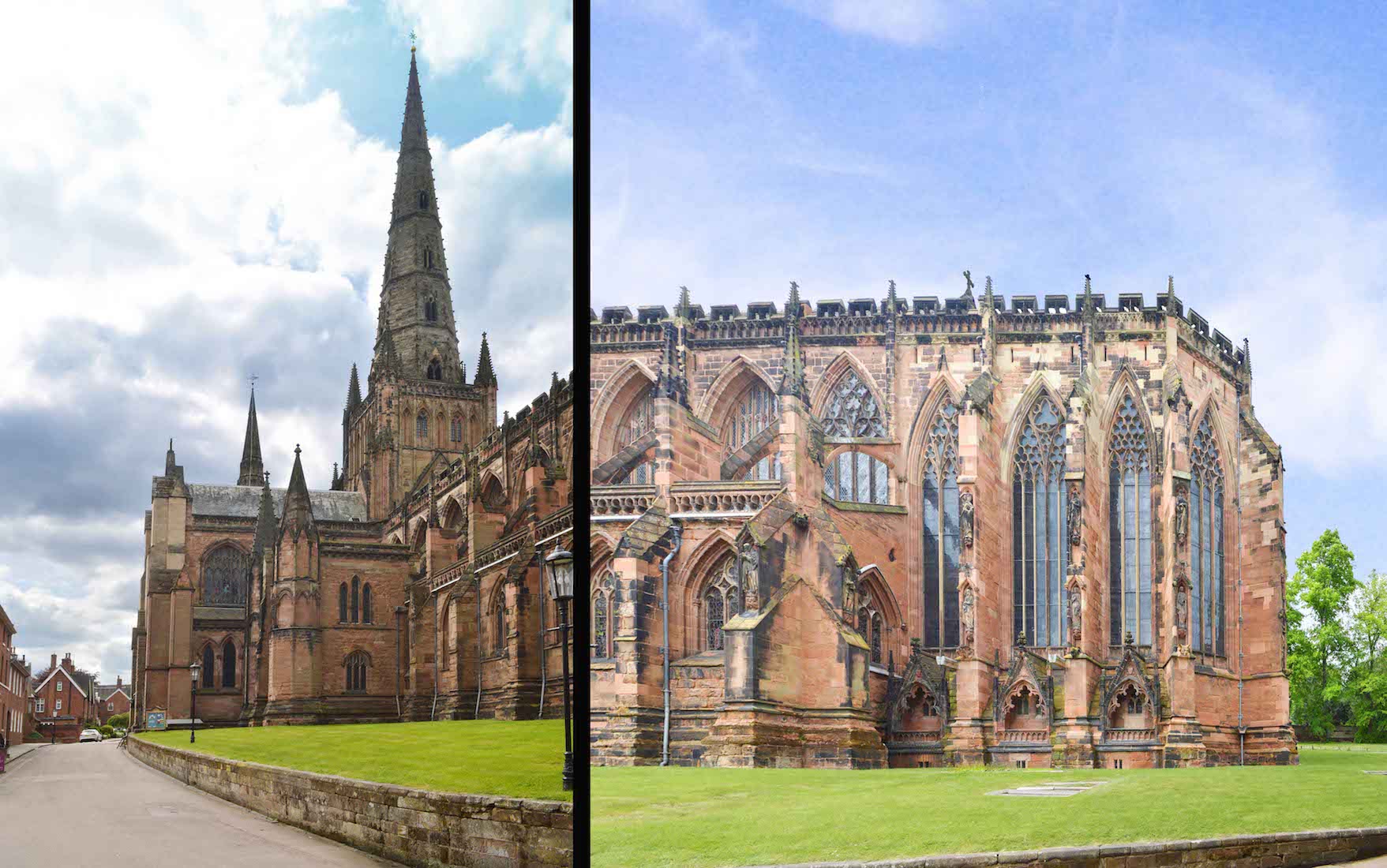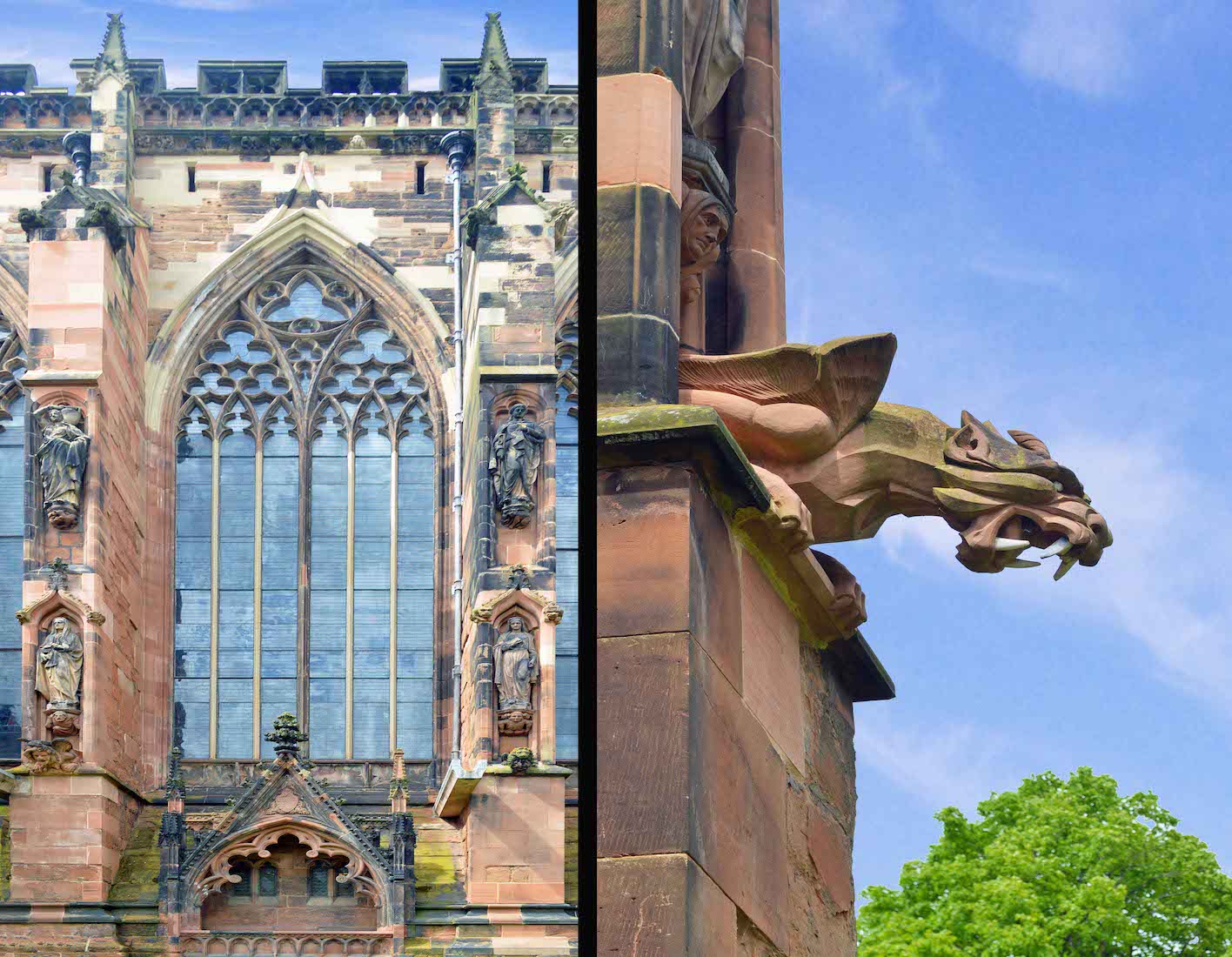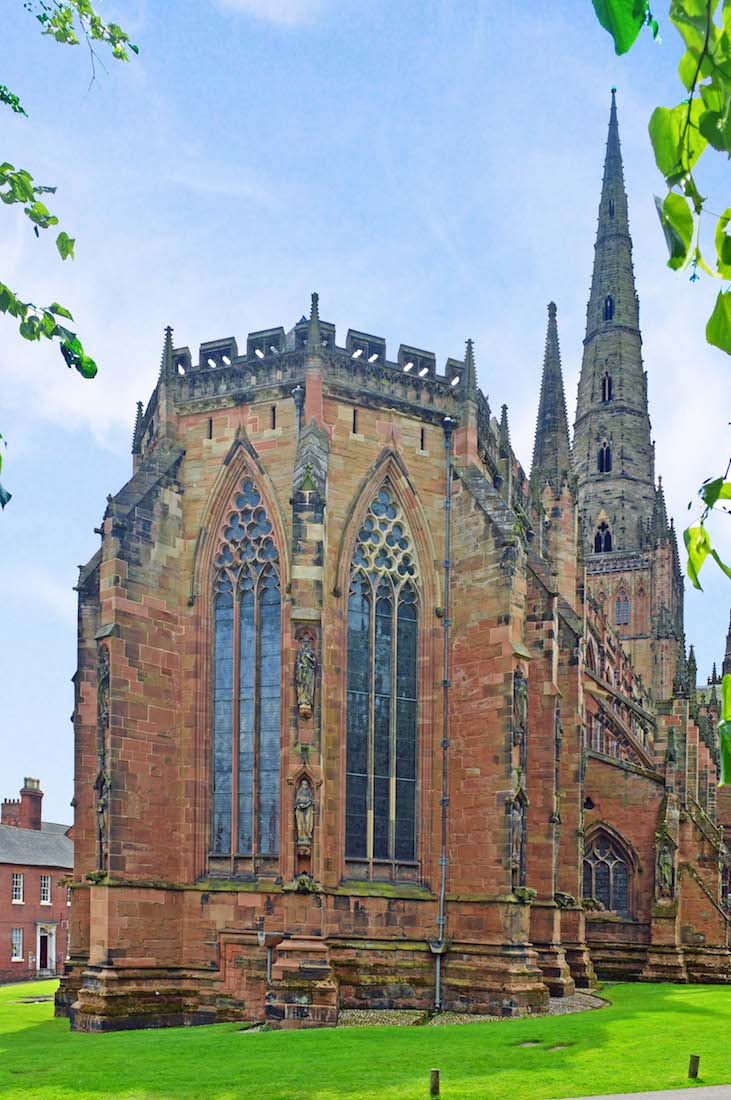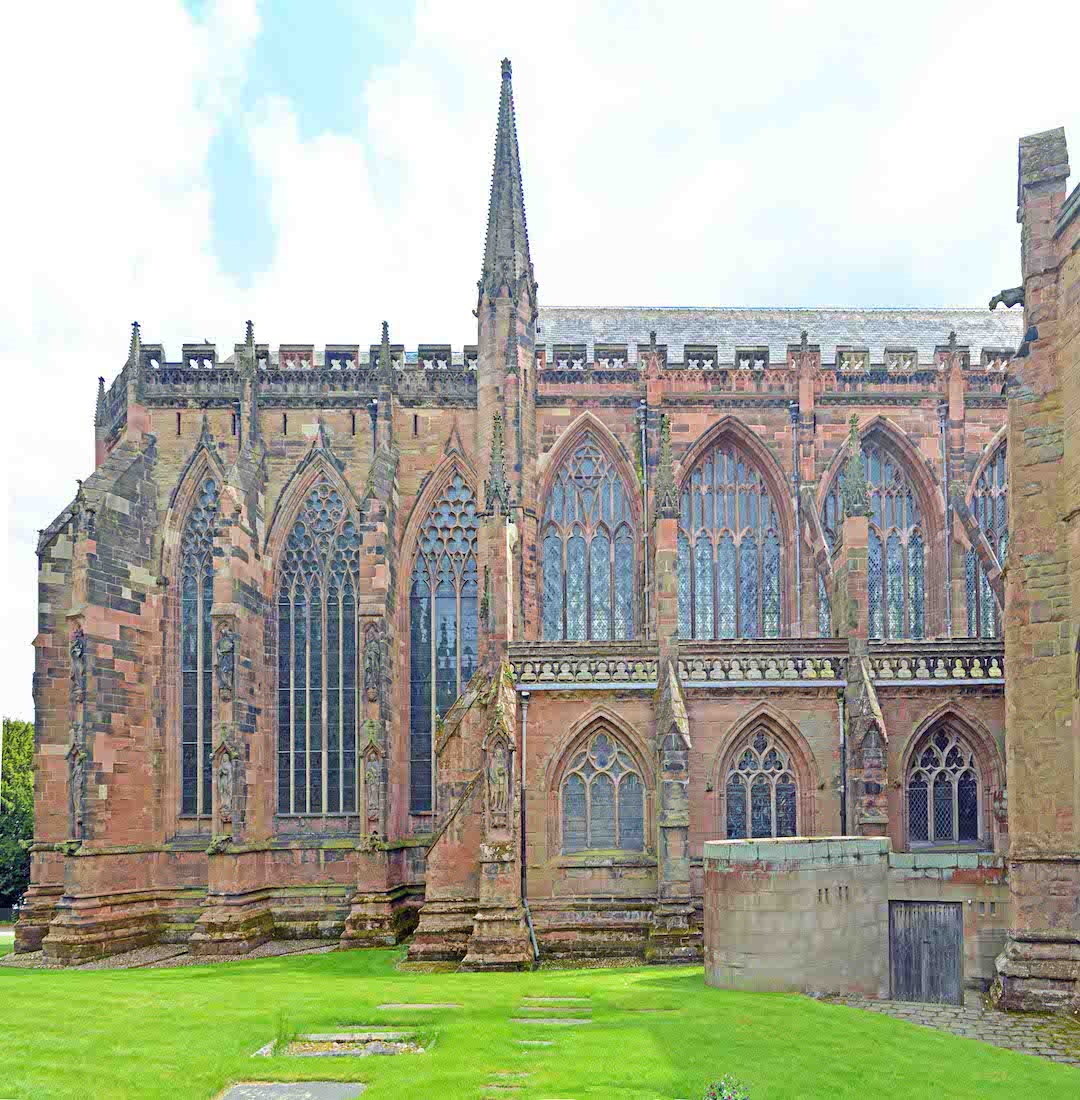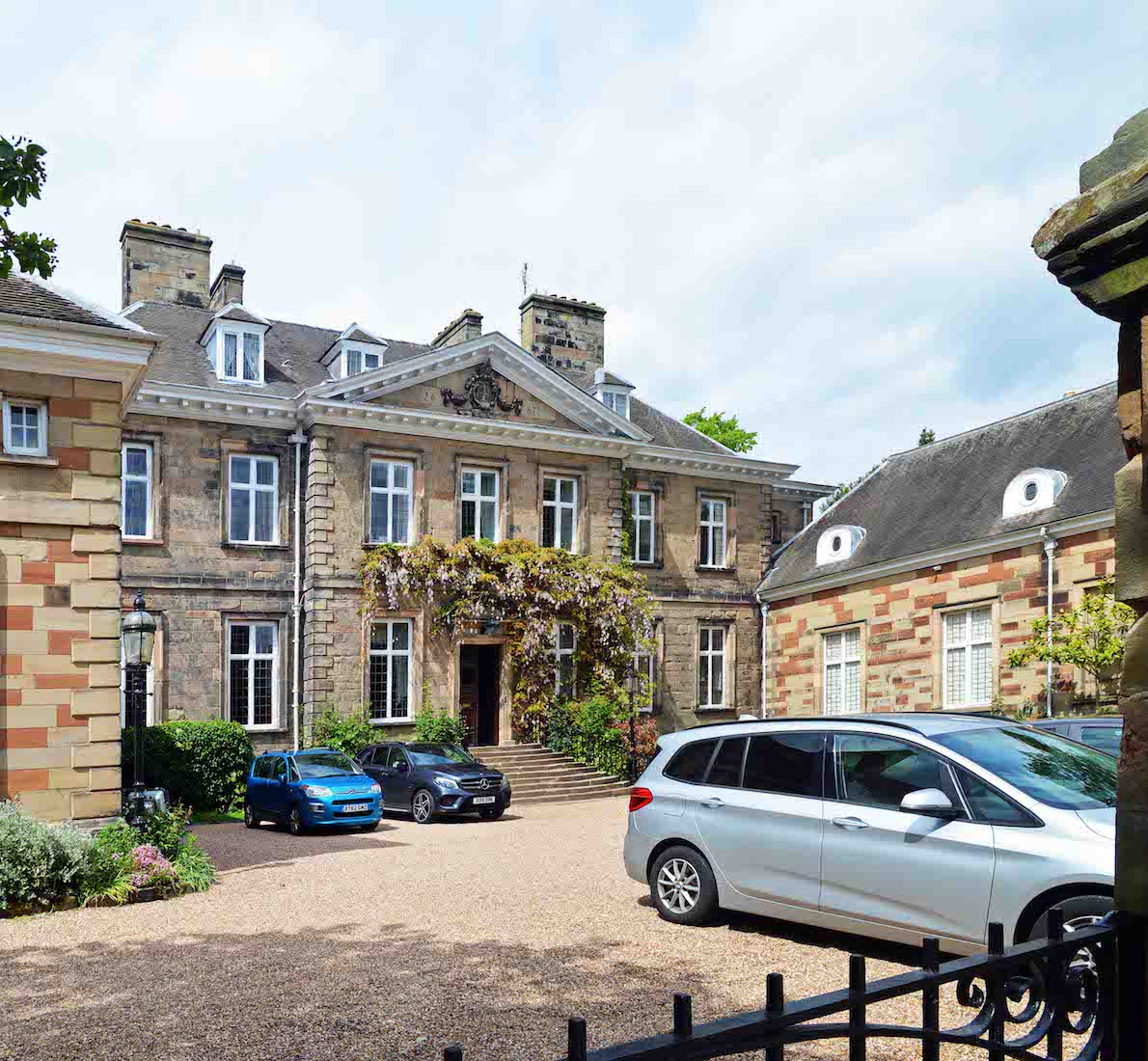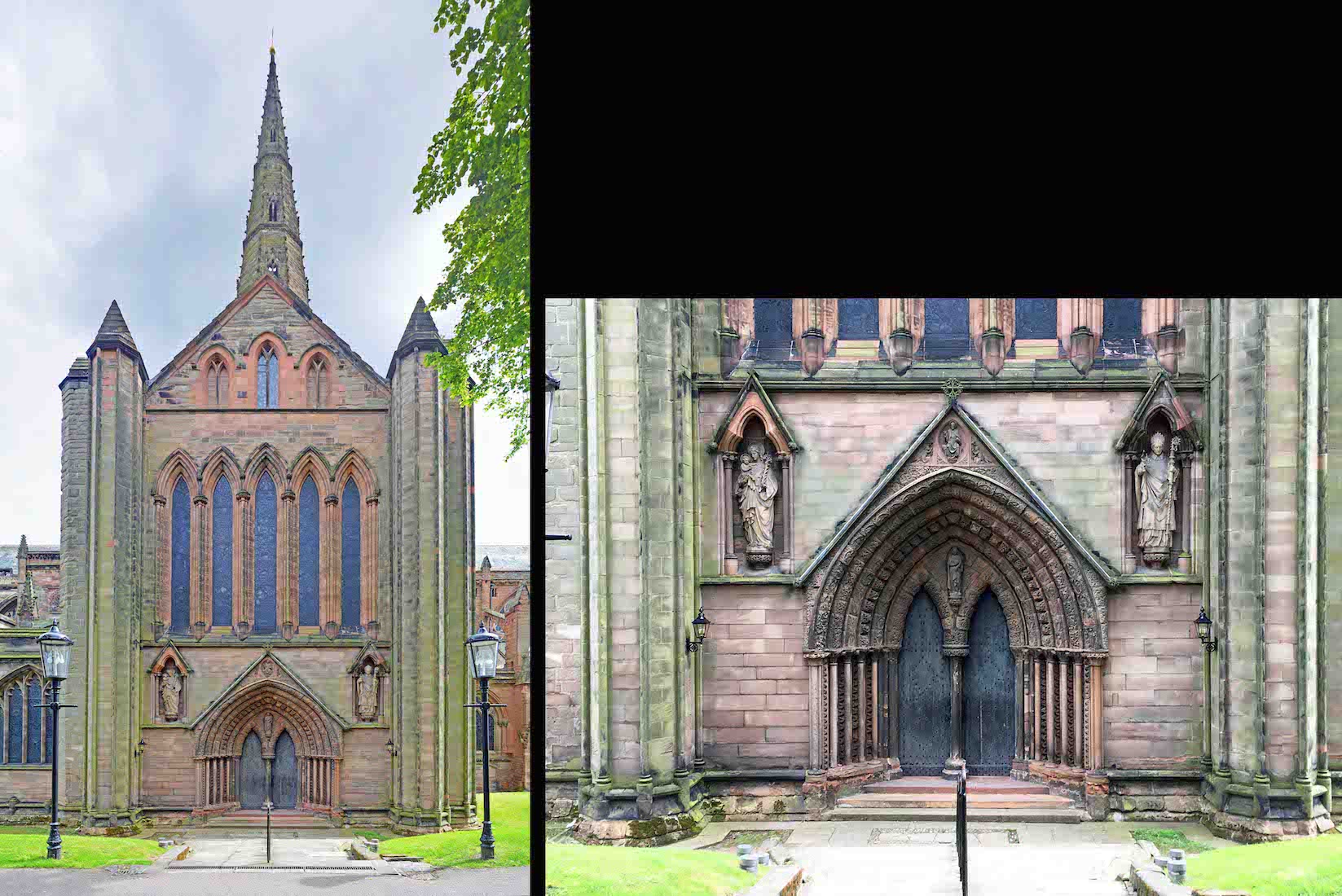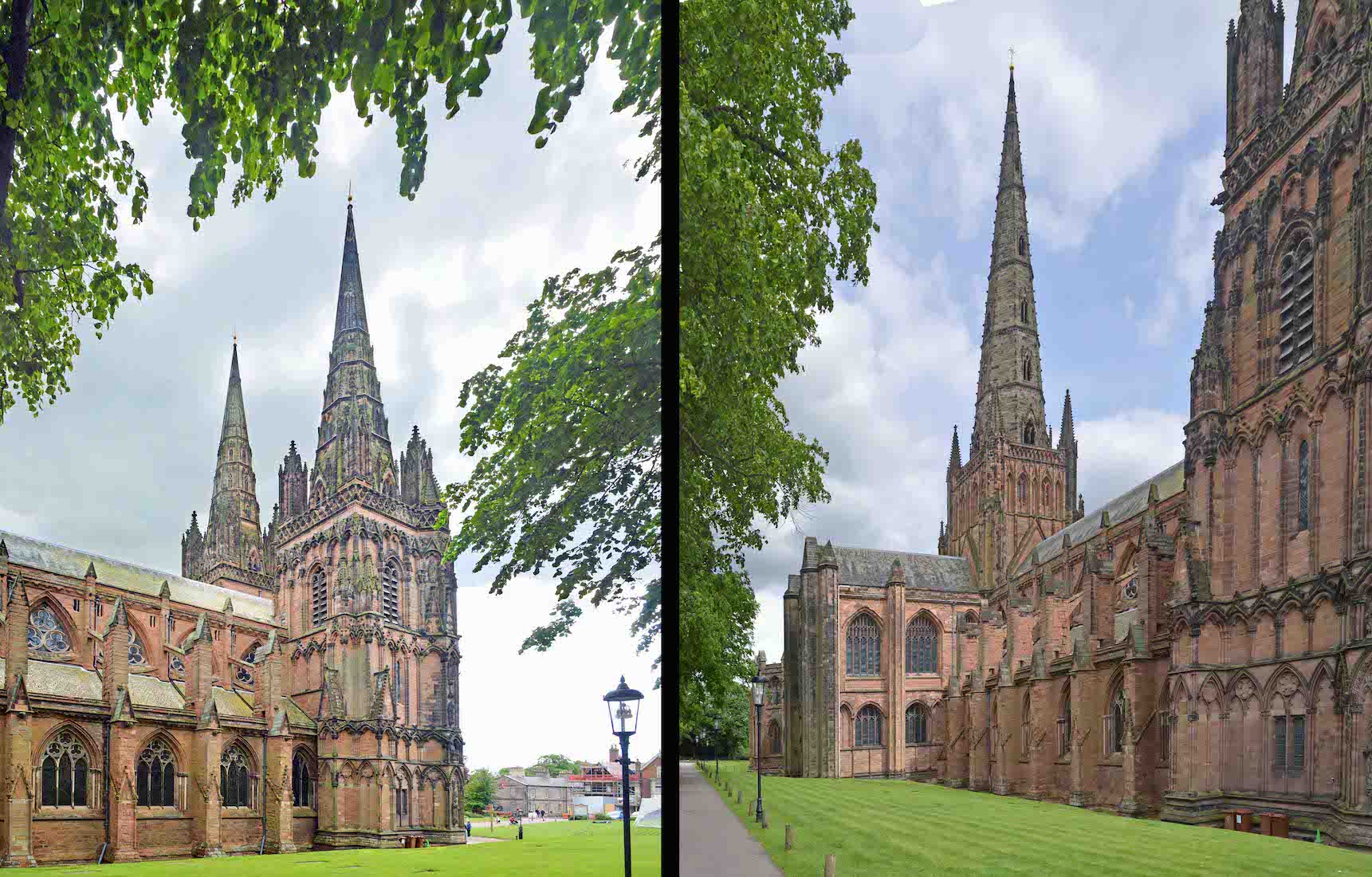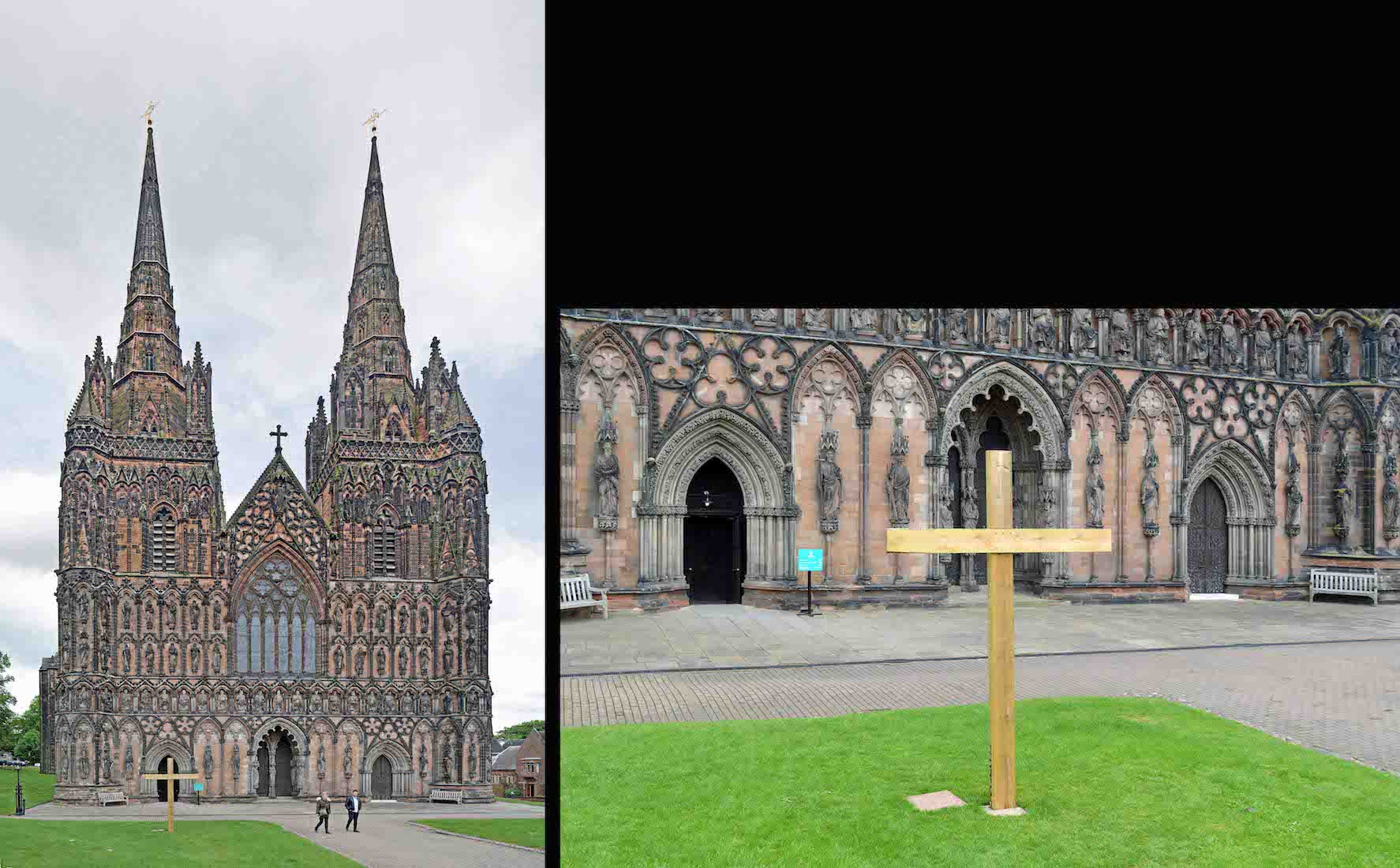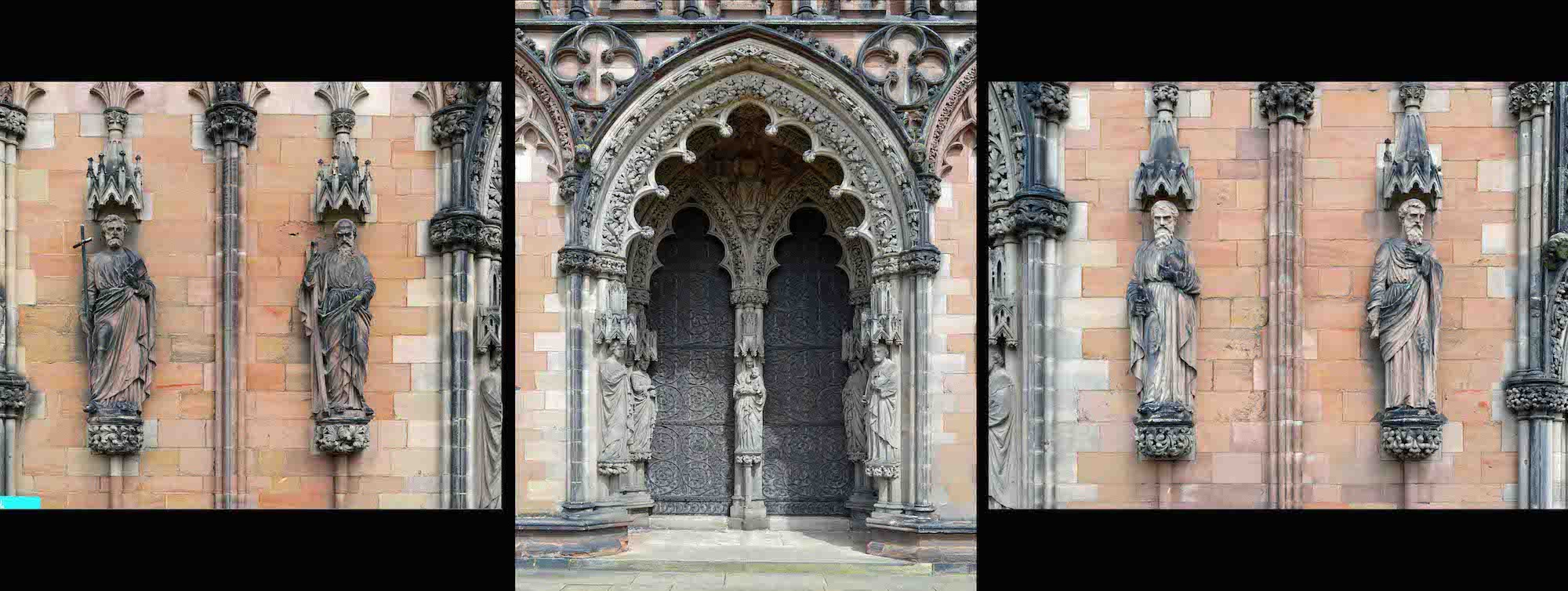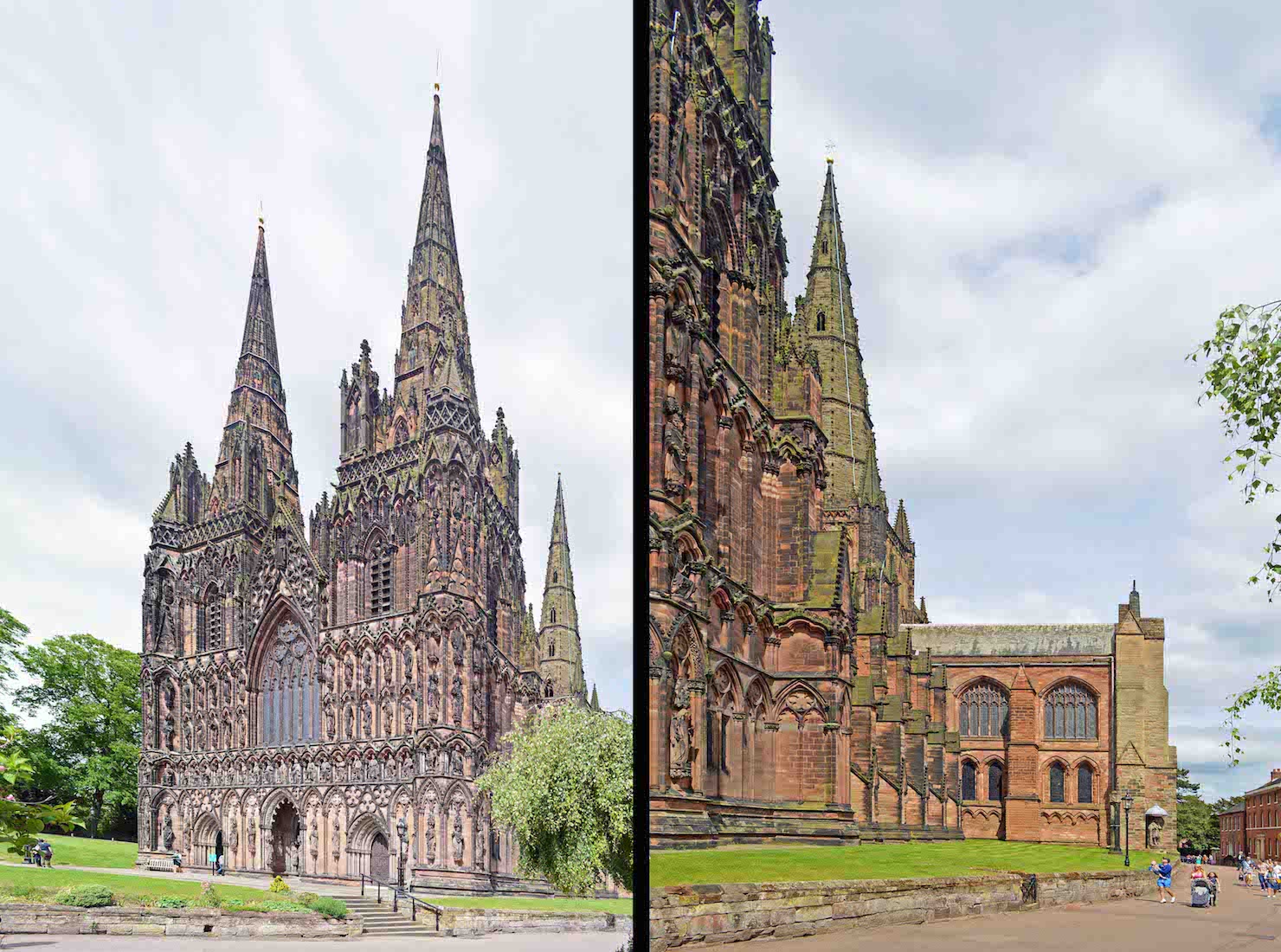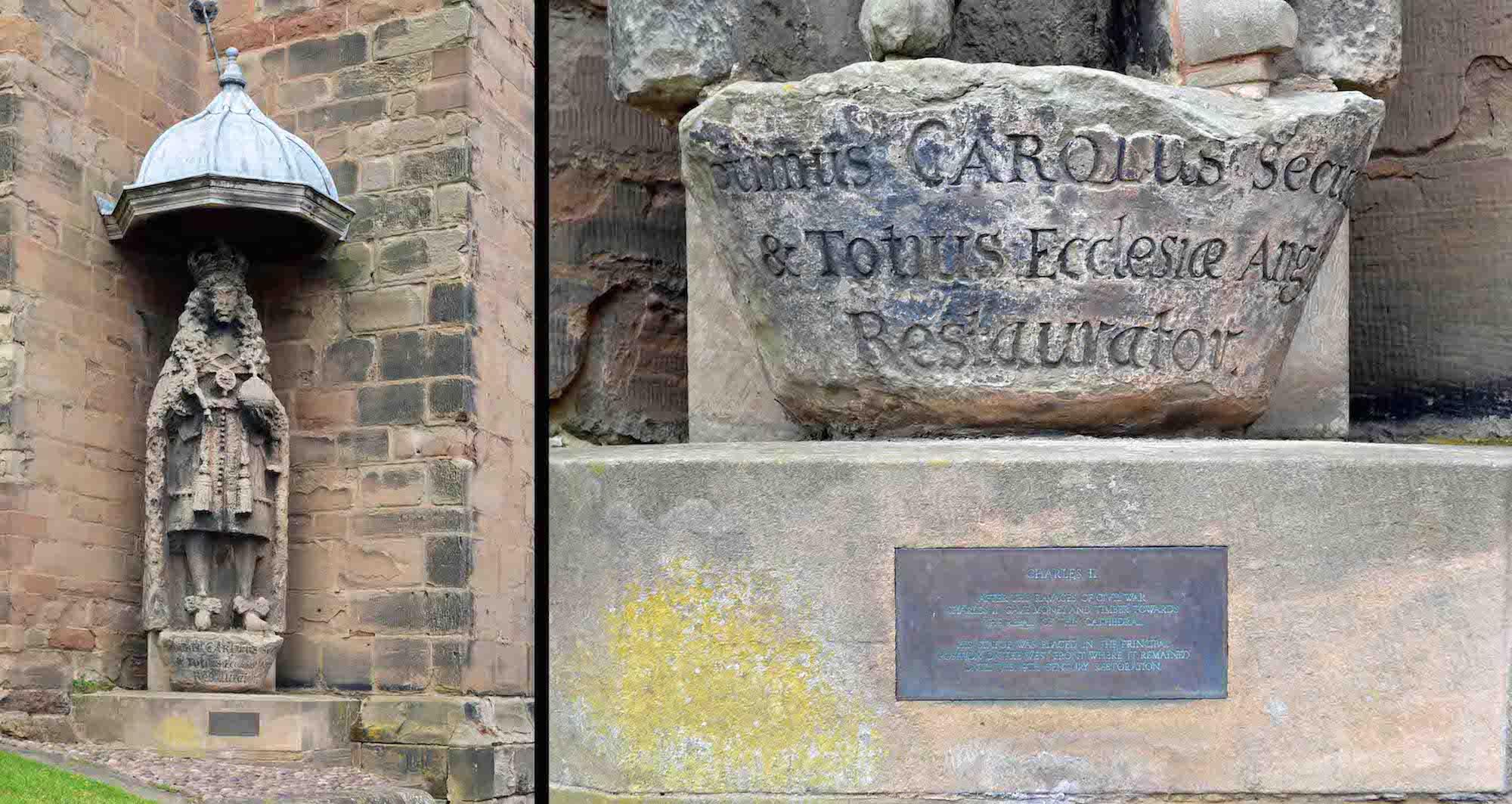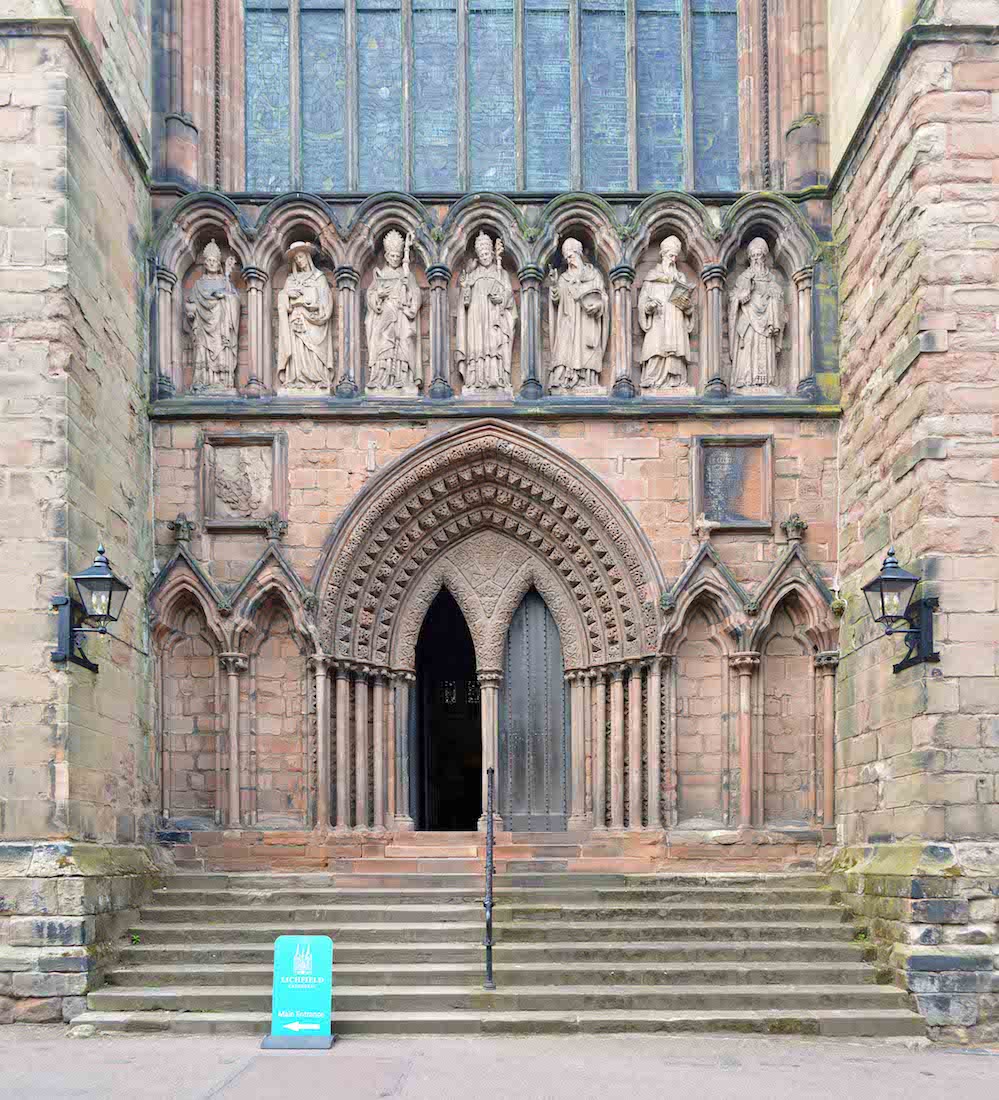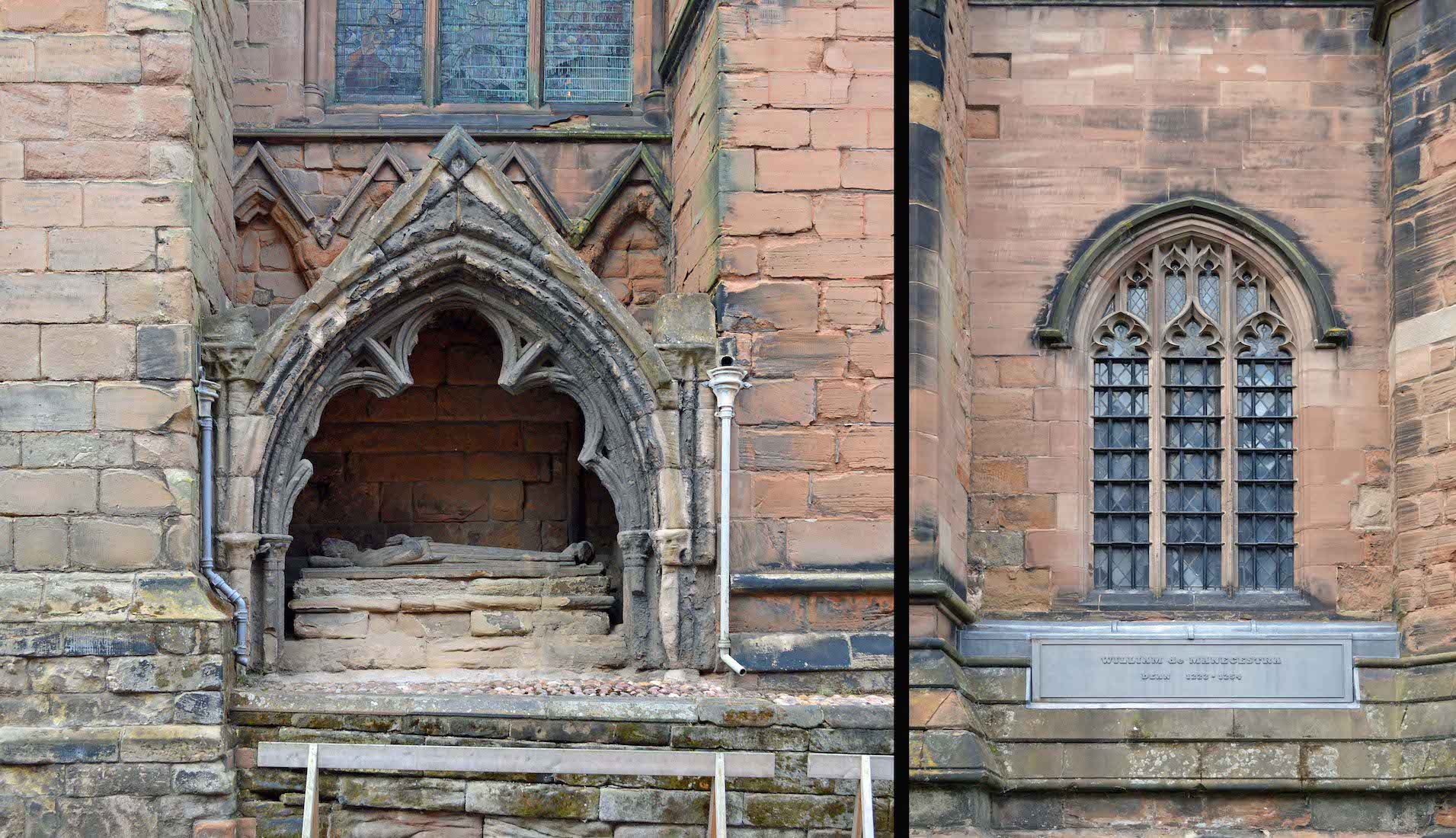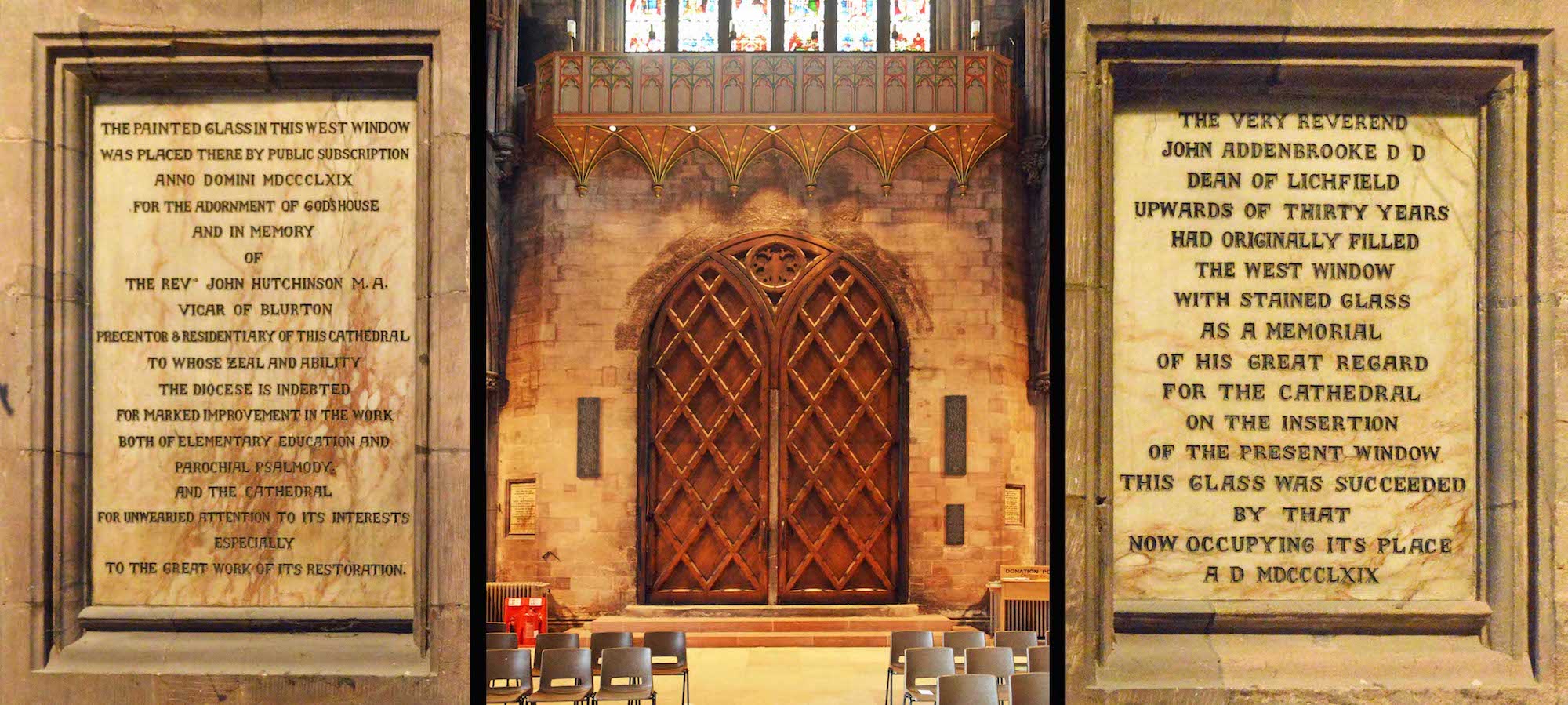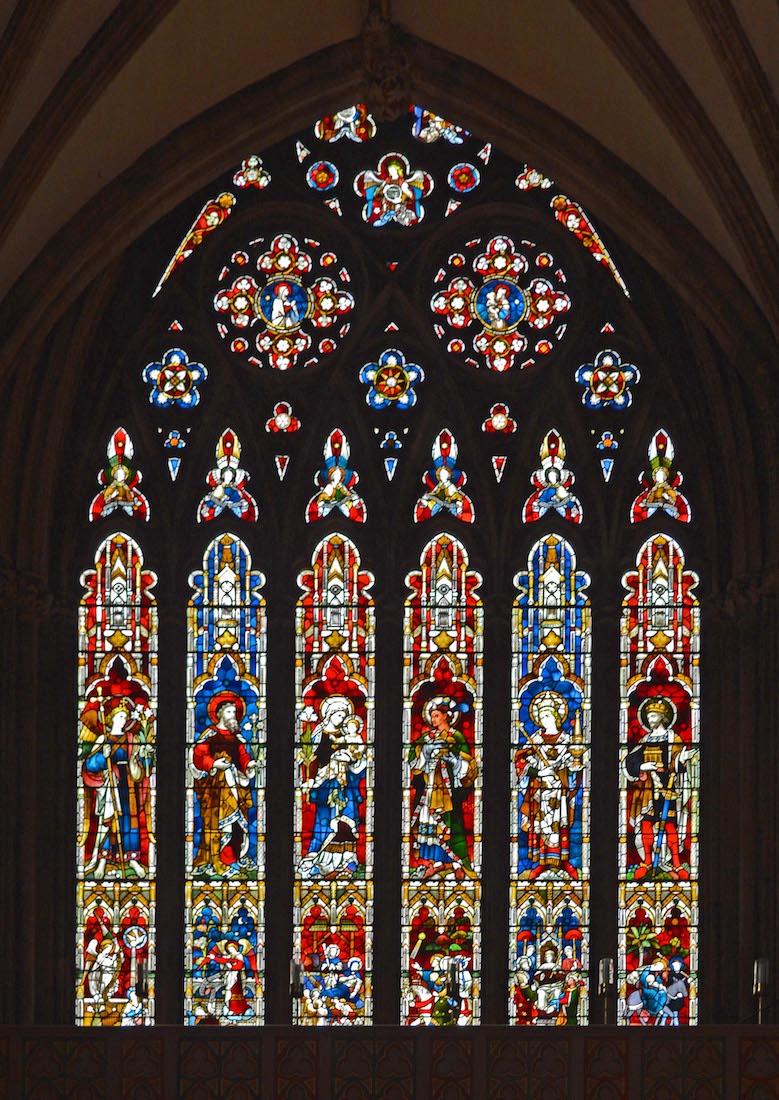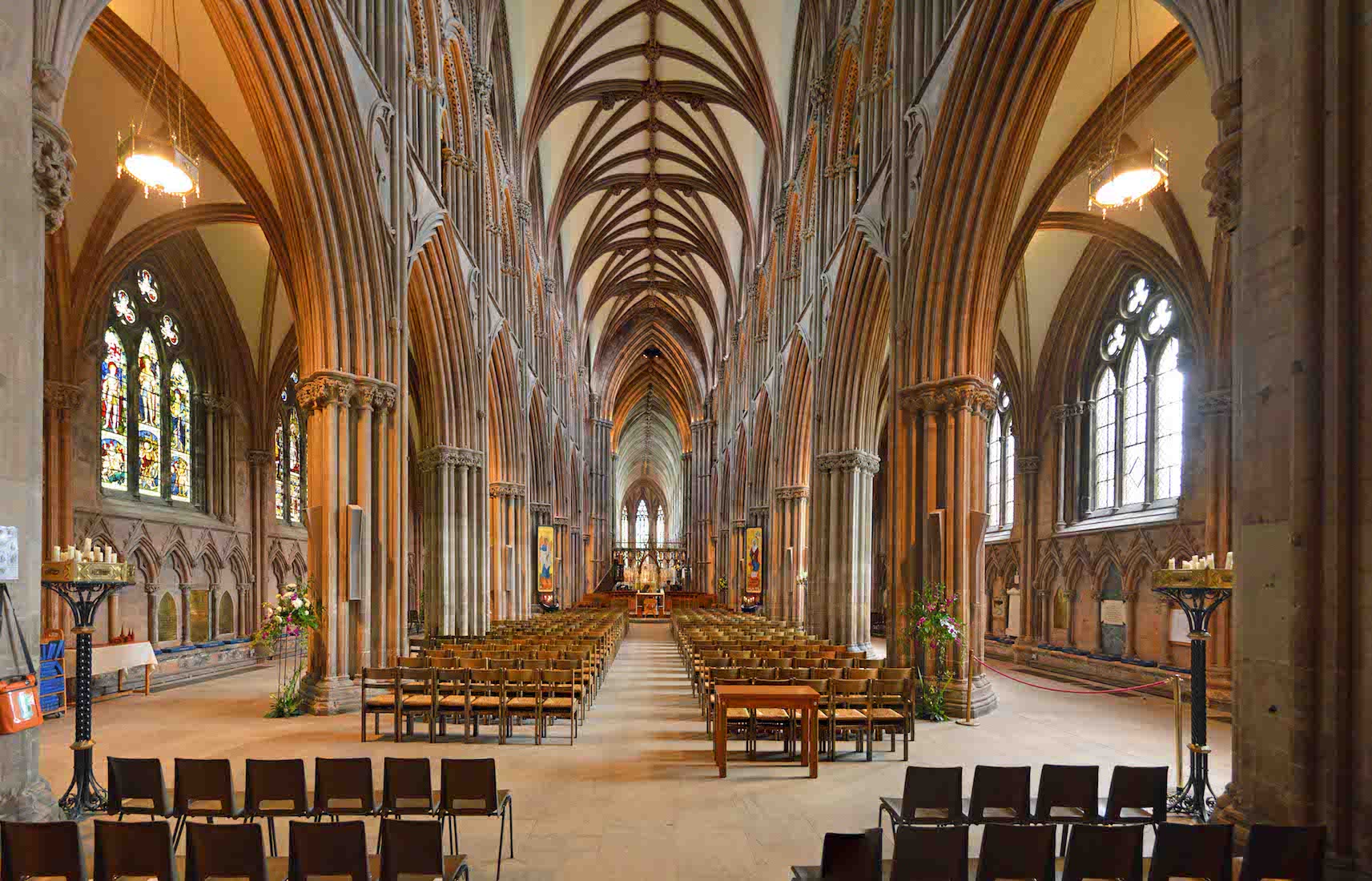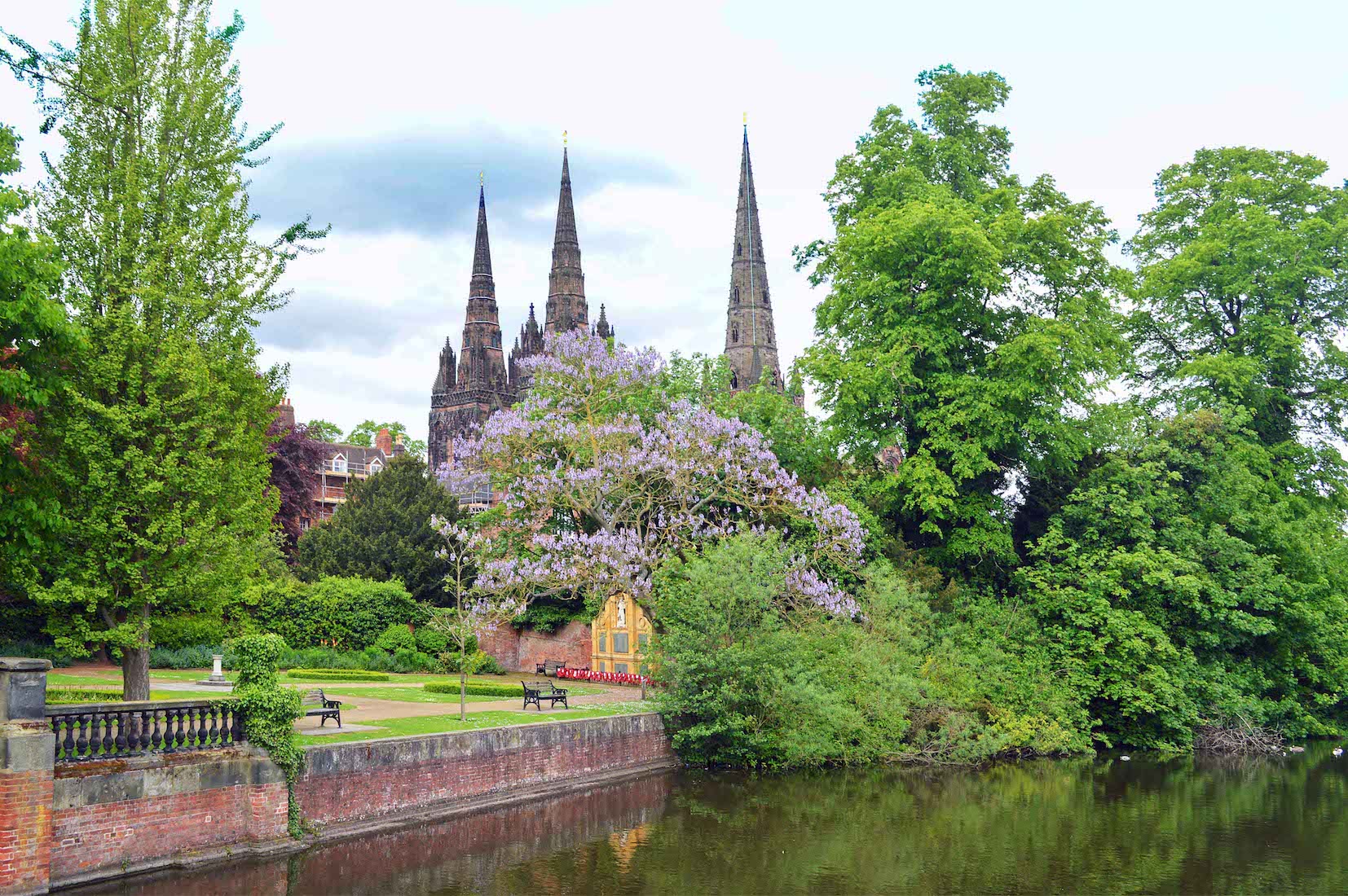
A ten minute walk from the railway station brings us through the delightful city centre to the large Minster Pool, and there on the far side stands the Cathedral. It is the only medieval English cathedral with three spires. The Diocese of Lichfield covers all of Staffordshire, much of Shropshire and part of the Black Country and West Midlands. The 99th and current Bishop of Lichfield is Michael Ipgrave who was appointed on 10 June 2016. PLAN
2. DIFFERENT VIEWS
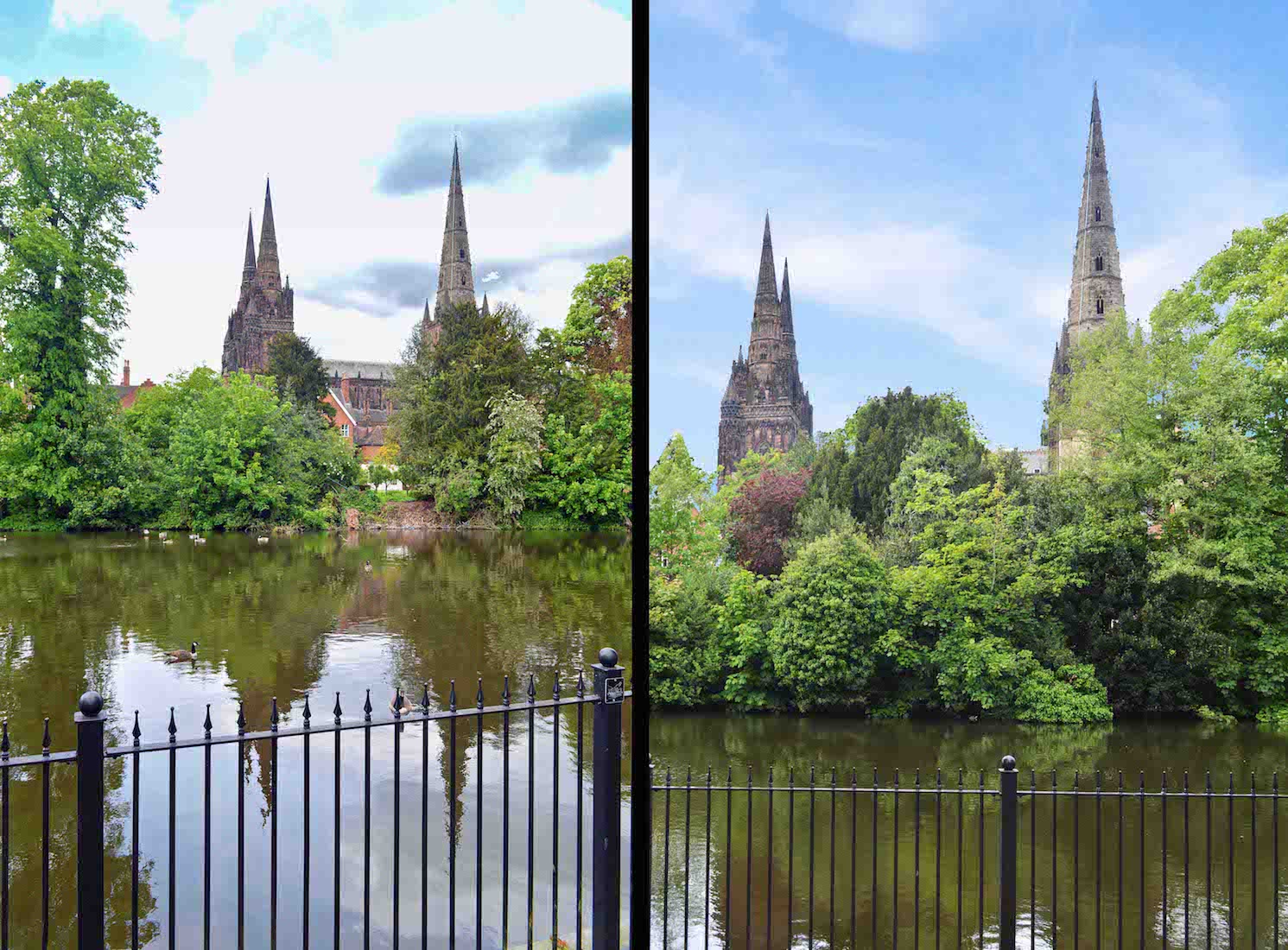
There is an attractive walkway along the town side of Minster Pool, giving ever-changing views of the Cathedral. The Cathedral is dedicated to St Chad and Saint Mary. The three spires are often referred to as ‘the Ladies of the Vale’.
3. FROM THE SOUTHEAST
We walk around the northern end of Minster Pool and arrive at the Cathedral itself, surrounded by lawn. The Cathedral is constructed of sandstone which came from a quarry on the south side of Lichfield. Its internal length is 113 metres (370 feet), and the breadth of the nave is 21m (68'). The central spire is 77m (252') high and the Western spires are about 58m (190') high.
4. SOUTH WALL DECORATIONS
We shall find an amazing amount of external carved decoration on this Cathedral. • There was originally a wooden Saxon church on this site, but starting in 1085 and continuing through the twelfth century this was replaced by a Norman cathedral made from stone. This was in turn replaced by the present Gothic cathedral begun in 1195. Construction was completed by the building of the Lady Chapel in the 1330s.
5. EASTERN LADY CHAPEL
A highlight of a visit to Lichfield Cathedral is the beautiful Lady Chapel which extends from the Eastern end. Notice the carved figures on all the buttresses. • There were three great sieges of Lichfield during the period of the English Civil War 1643–1646, as the cathedral close was surrounded by a ditch and defensive walls made it a natural fortress. During this time, the Cathedral suffered extensive damage: the central spire was demolished, the roofs ruined and all the stained glass smashed.
6. NORTH LADY CHAPEL AND PRESBYTERY
We look forward to seeing the very large windows in the Lady Chapel. At rght we catch a glimpse of the chapter house with some strange utility building attached! • Bishop Hacket began the restoration of the cathedral in the 1660s, aided by substantial funds donated by the restored monarch, but it was not until the 19th century that the damage caused by the Civil War was fully repaired.
7. BISHOP’S PALACE
The Bishop’s Palace is a 17th-century building situated on the north side of the Cathedral Close. The current building replaced a medieval Bishop’s Palace built in the 14th century for Bishop Langton. The first palace was destroyed during the English Civil War and rebuilt in 1687 as the current building. The palace was residence of the Bishop of Lichfield from the late 1860s until 1954; it is now used by Lichfield Cathedral School.
8. NORTH TRANSEPT
The transepts were constructed between 1220 and 1240. We might notice many small decorative touches here. • Although the 18th century was a golden age for the City of Lichfield, it was a period of decay for the cathedral. Most of the statues on the West front were removed and the stonework covered with Roman cement. At the end of the century James Wyatt organised some major structural work, removing the High Altar to make one worship area of Choir and Lady Chapel and adding a massive stone screen at the entrance to the Choir.
9. SPIRES AND TOWERS
As we make our way towards the West wall, we stop to admire the towering spires. There are only three cathedrals in the United Kingdom with three spires. Lichfield Cathedral, dating from the 13th and early 14th centuries is the only medieval Cathedral. Between the 14th and 16th centuries Lincoln Cathedral also had three spires, but the central spire collapsed in a storm and was not rebuilt. Both Truro Cathedral, Cornwall (late 19th–early 20th century) and St Mary’s Episcopal Cathedral, Edinburgh (late 19th century) were built in Gothic Revival style and also have three spires.
10. A CONTRAST IN STYLES
The ornate West front was extensively renovated in the Victorian era by Sir George Gilbert Scott. It includes a remarkable number of ornate carved figures of kings, queens and saints. Work was done with original materials where possible, and the creation of fine new imitations and additions when the originals were not available. The (temporary) simple wooden cross shown at right provides a striking contrast with its simplicity.
11. WEST WALL FIGURES
Depicted are: (prophets unless otherwise indicated). Top left to right : St Gabriel archangel (shield and sceptre), Zechariah, Nahum, Amos, Jeremiah; Isaiah, Zephaniah, Jonah (fish and scroll), Hosea, St Michael archangel (in armour); Bishop Hackett, Bishop Lonsdale. Bottom left to right: St Uriel archangel (spear), Malachi, Habakkuk, Obadiah, Daniel; Ezekiel, Haggai, Micah, Jonah, St Raphael archangel (pilgrim staff); Bishop Clinton (Cathedral model), Bishop Patteshull. There is a name on each pedestal.
12. LOWEST FIGURES
The four figures shown here at the lowest level are from left, the apostles: St Philip (sword and book), St Andrew (diagonal cross); St Paul (sword and book) and St Matthew (wallet). There are 113 statues on the West wall! An excellent website listing the statues is http://vanderkrogt.net/statues/object.php?webpage=ST&record=gbwm025 .
13. SOUTHWEST VIEW
From this viewpoint we can see the West wall, and down the South side to the transept. Looking closely, there appears to be a sheltered figure at the end of the transept.
14. CHARLES II
This large stone figure of Charles II in state robes and wearing a crown, with the orb in his left hand, was created by Sir William Wilson. Up until the 19th century, it stood on top of an ornamented gable, between the two spires. After the ravages of Civil War, Charles II gave money and timber towards the repair of this Cathedral – this is acknowledged by the Latin inscription..
15. SOUTH TRANSEPT ENTRY
The South transept doorway is ornately carved. Above the entry and below the great window are seven sculpted figures. From left these are: St Augustine, (354 - 430), Bishop of Hippo Regius; St Jerome (c.347 - 420), Roman Christian priest, who became a Doctor of the Church; St Ambrose (c. 340 - 397), archbishop of Milan; St. Gregory the Great, pope 590-604; St (John) Chrysostom, (c. 347 - 407), Archbishop of Constantinople – an important Early Church Father; St Athanasius of Alexandria (c. 296 - 373), bishop of Alexandria; St Basil of Caesarea (c. 329 - 379), Greek bishop of Caesarea Mazaca in Cappadocia, and an influential theologian.
16. SOUTH WALL EFFIGY AND PLAQUE
The effigy in a sheltered niche in the South wall appears to be of some unknown person. The nearby plaque remembers William de Manecestra who was the Cathedral’s first Dean from 1222 to 1254. In references there seems to be some confusion with John de Derby who (according to Wikipedia) was Dean 1280 – 1319.
17. ENTRY
We return to the West wall and enter through the Northern door. Inside we can look back at the closed central door which has a plaque on each side. The plaques give some history of the central West window which was installed in 1869 in memory of the Revd John Hutchinson – a man much involved in the cathedral restoration. This replaced stained glass given by the Very Revd John Addenbrooke who was Dean of the Cathedral for over 30 years.
18. WEST WINDOW
The West window is by Clayton & Bell, and was inserted after the window tracery was redesigned by George Gilbert Scott in the 1860s. The subject is the Virgin and Child greeted by the three kings (at right), and watched by Joseph and the Archangel Gabriel (at left).
19. SOUTHWEST TOWER
This tower room houses some regimental colours (along with those in the South transept). The window shows Archangel Michael and St Chad. When Chad was made Bishop of Mercia in 669 he moved his See from Repton to Lichfield, possibly because this was already a holy site, as the scene of martyrdoms during the Roman period. The first cathedral to be built on the present site was in 700AD when Bishop Hedda built a new church to house the bones of St Chad which were located here, and which had become a sacred shrine to many pilgrims when he died in 672.
20. NAVE
The beautiful Cathedral nave has two wide side aisles, and gothic arches supported by clustered columns. There are stained glass windows on the North side, although (some of) the South side windows are clear. Near the front, two framed icons flank our view of the sanctuary. Some carefully drawn plans of the Cathedral show a small kink in the Cathedral axis at the crossing, and this is evident in this view.


